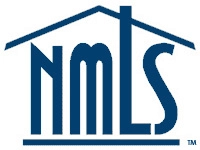Federal Student Loans: Payments are Once Again Due
| Interest on federal student loans has been zero since the start of the pandemic, but as of Sept. 1, interest has started accruing again with payments, once again, becoming due. With rates typically between 3% and 7%, student loan payments can result in a significant increase in borrower’s monthly expenses as payments begin in October.Fannie Mae offers a student loan refinance feature that waives LLPAs if requirements are met. Click here for more information. |
|---|
What is required when paying off student loans with a refinance?
Student Loan Cash-Out Refinances
The student loan cash-out refinance feature allows for the payoff of student loan debt through the refinance transaction with a waiver of the cash-out refinance LLPA if all of the following requirements are met:
| ✓ | Requirements for Student Loan Cash-out Refinances |
|---|---|
| The loan must be underwritten in DU. DU cannot specifically identify these transactions, but will issue a message when it appears that only subject property liens and student loans are marked paid by closing. The message will remind lenders about certain requirements below; however, the lender must confirm the loan meets all of the requirements outside of DU. | |
| The standard cash-out refinance LTV, CLTV, and HCLTV ratios apply per the Eligibility Matrix. | |
| At least one student loan must be paid off with proceeds from the subject transaction with the following criteria:proceeds must be paid directly to the student loan servicer at closing;at least one borrower must be obligated on the student loan(s) being paid off, andthe student loan must be paid in full – partial payments are not permitted. | |
| The transaction may also be used to pay off one of the following:an existing first mortgage loan (including an existing HELOC in first-lien position); ora single-closing construction-to-permanent loan to pay for construction costs to build the home, which may include paying off an existing lot lien. | |
| Only subordinate liens used to purchase the property may be paid off and included in the new mortgage. Exceptions are allowed for paying off a PACE loan or other debt (secured or unsecured) that was used solely for energy improvements (see B5-3.4-01, Property Assessed Clean Energy Loans and B5-3.3-01, HomeStyle Energy for Improvements on Existing Properties for additional information). | |
| The transaction may be used to finance the payment of closing costs, points, and prepaid items. With the exception of real estate taxes that are more than 60 days delinquent, the borrower can include real estate taxes in the new loan amount as long as an escrow account is established, subject to applicable law or regulation. | |
| The borrower may receive cash back in an amount that is not more than the lesser of 2% of the new refinance loan amount or $2,000. The lender may also refund the borrower for the overpayment of fees and charges due to federal or state laws or regulations, or apply a principal curtailment (see B2-1.3-02, Limited Cash-Out Refinance Transactions for additional information). | |
| Unless otherwise stated, all other standard cash-out refinance requirements apply. |














